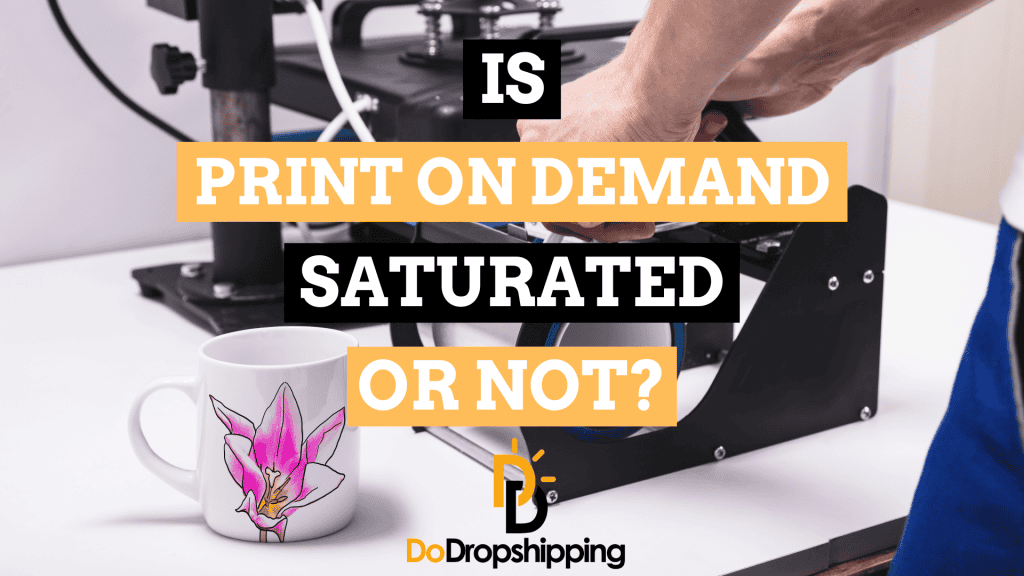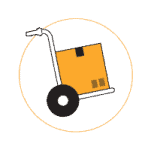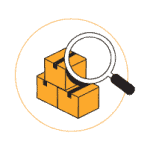Are you interested in starting a print on demand (POD) business in 2024 but also wondering if it's still a good idea with so many others already in the game?
No worries!
In this article, we’ll cover the current state of print on demand and answer whether the market is as saturated as it looks.
Is print on demand (over)saturated?
While it's true that print on demand has become more competitive, with many people launching their stores, the answer is no.
Print on demand is not oversaturated, and there are still plenty of opportunities for success.

Despite the challenges of a seemingly saturated market, the POD industry continues to do well.
Growth factors include the expansion of ecommerce, emerging markets, and the increasing number of internet and mobile users worldwide.
Consider the success stories: here are 15 print on demand stores that are still successfully operating in the print on demand space!
To stand out in a crowded market, focus on the following strategies:
- Target niche audiences looking for specific products.
- Offer personalization options that allow customers to have a hand in creating their products.
- Prioritize high-quality products and excellent customer service.
- Use storytelling and unique designs to differentiate your brand.
By trying these strategies, new POD stores can create a space for themselves and build a loyal customer base.
So, while the POD market may seem daunting at first glance, store owners can still succeed with the right approach and mindset.
Ready to level up? Our ultimate print on demand guide is full of our best insights, ideas, and steps to follow.
What is market saturation?

Let's continue by learning what market saturation is and what causes it.
Market saturation occurs when the supply of products exceeds the demand. This creates intense competition, which can be a real challenge to maintaining productivity.
When more stores try to sell the same products, customers must choose which one to buy from and ignore the rest.
Causes of market saturation
Here’s a look at what exactly causes market saturation:
1. Intense competition
As you can guess, the more POD store owners enter a market, the harder it will be for a store to stand out.
One of the most popular POD suppliers, Printful, has reported more than two million registered users.
2. Technological advancements
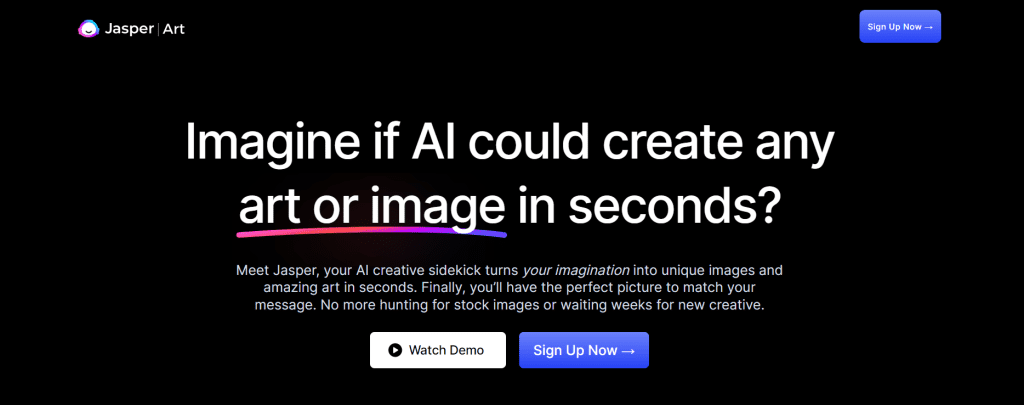
Thanks to the technology communicating and setting up POD stores with suppliers, starting a POD business has never been easier.
However, this low entry barrier means many people can join and be competitors.
3. Shifting trends
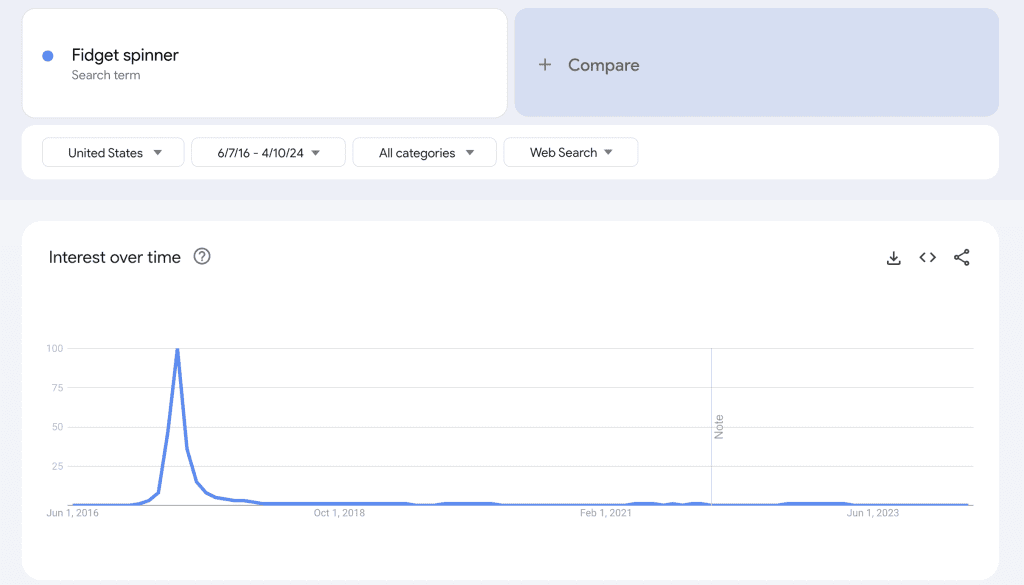
Customer demand and trends are constantly changing, which can be challenging for some POD stores to keep up with.
For example, fidget spinners were among the most in-demand products in 2017, but the trend quickly faded, leaving many businesses with unsold stock.
4. Lack of differentiation in product offerings
The simplicity of launching a website through platforms like Shopify and using the most popular POD suppliers means many sellers might end up offering similar products.
This similarity can make it tough to differentiate and stand out in a crowded market.
How do you tell if a print on demand niche is saturated?

It can be challenging to decide which niche is best to go with. Here’s how to analyze it:
1. High number of competitors
Start by researching how crowded your chosen niche is and its demand level.
Tools like Google Keyword Planner or SEMrush can analyze search volumes and identify the number of businesses targeting similar keywords.
2. Declining search interest
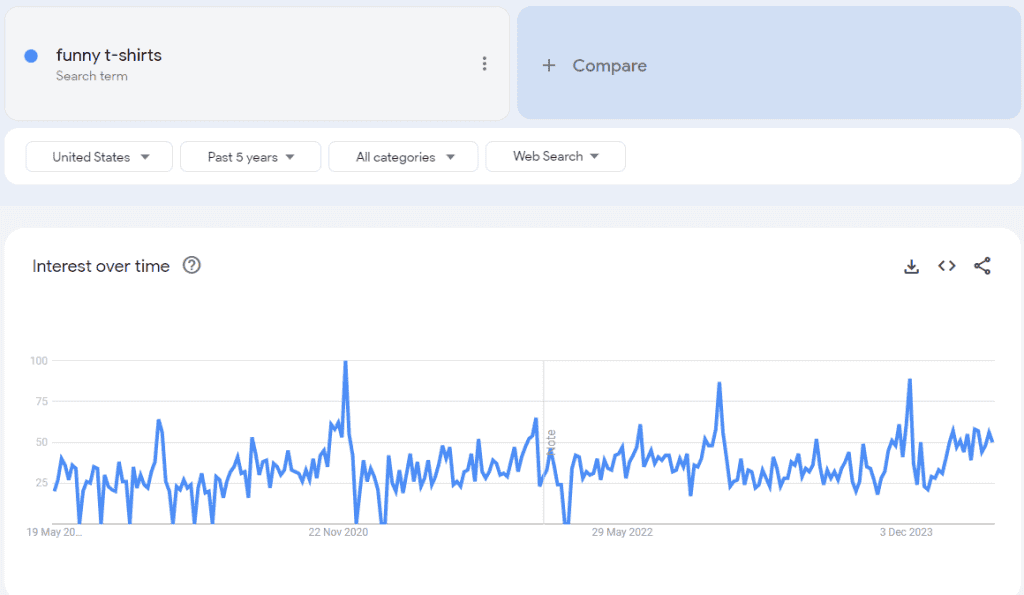
Tools like Google Trends can analyze search volumes for your niche.
If you notice a decline or a plateau in search interest, it could indicate reduced demand.
For example, the search term 'funny t-shirts' has remained relatively stable over the past five years, which means there’s enough ongoing demand.
However, diving deeper into specific sub-niches like 'dachshund t-shirts' might reveal opportunities to capture targeted demand within a broader market.
3. Price wars
Watch how competitors set their prices.
If many are continuously lowering prices, it may indicate a price war, where businesses undercut each other to attract customers.
This scenario can lead to very low profit margins, making the niche less attractive financially.
4 Reasons why print on demand is still profitable

Despite concerns of market saturation, the print on demand industry still presents profitable opportunities.
And here's why:
1. Growing interest in ecommerce
Ecommerce is thriving globally, with online sales reaching new heights. eMarketer predicts that international sales will hit $6.5 trillion by 2024.
2. Emerging markets
Economies around the world are expanding, opening new opportunities for POD businesses.
According to a report by ResearchAndMarkets.com, the Asia-Pacific region is expected to witness the highest growth in the POD market.
3. Rise of internet and ecommerce users
The increase in internet connectivity is fueling ecommerce growth, creating fresh opportunities for new POD customers.
As of January 2022, DataReportal reports 4.95 billion internet users worldwide, representing 62.5% of the global population.
4. The evolution of mobile commerce (M-commerce)
Mobile commerce has seen significant growth, allowing customers to purchase on the go.
According to a report by Designveloper, M-commerce in the US is expected to reach $488 billion, or 44% of total ecommerce sales, by 2024.
4 Tips for succeeding in POD despite market saturation
Here are our top strategies to help you stand out in a saturated print on demand market:
1. Focus on niche markets and underserved audiences
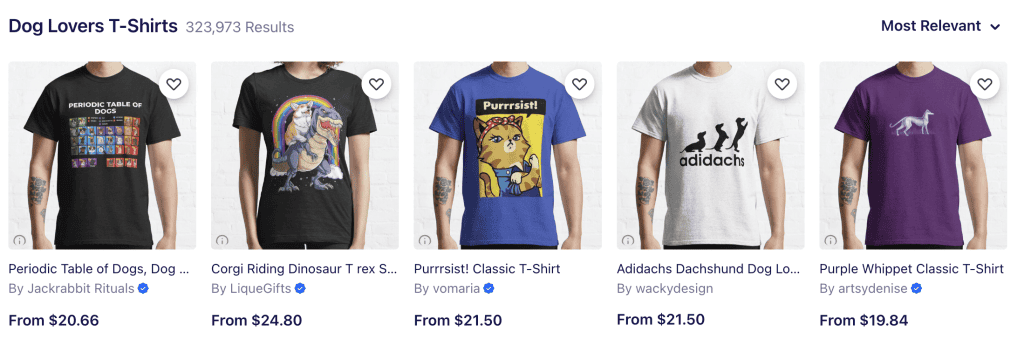
Narrow your focus on the specific market groups to differentiate your brand.
For example, instead of targeting the broad 'funny t-shirts' market, focus on a particular niche like 't-shirts for dog lovers' or 'sarcastic t-shirts for nurses.'
Targeting these specific groups makes it easier to connect with potential customers and increase sales.
To help you get started, check out this article that will guide you in selecting the right print on demand niche.
2. Offer personalization and customization options
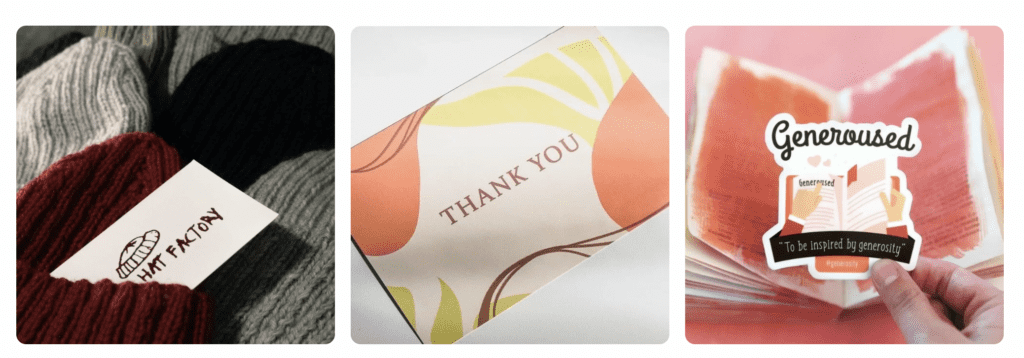
A unique personalization for your products makes you more competitive in the market.
According to a Deloitte study, 50% of consumers are interested in purchasing personalized products or services, and one in five are willing to pay a 20% premium for customized items.
To help you get started, check out this article that will guide you in starting your own online store with personalized products.
3. Prioritize quality and customer experience

Selling can be complex in a saturated market when using a commonly used supplier, but there’s always room for quality.
According to a survey by BrightLocal, 91% of consumers trust online reviews as much as personal recommendations, and 82% of consumers read online reviews for local businesses.
This highlights the importance of positive customer feedback!
So make sure that your designs and materials are of the best possible quality.
4. Leverage storytelling and unique designs to stand out
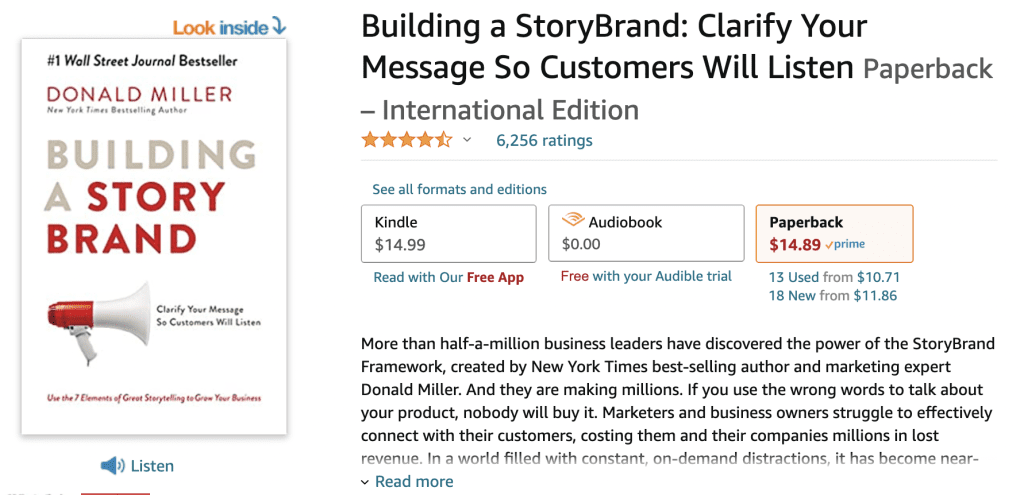
Developing a compelling brand story and unique designs can help you stand out.
Ensure your website, social media, and product descriptions match your brand's core values.
We have an article that goes into more detail on building your brand's story that will allow you to stand out.
Summary
Before we go, we've created a quick summary of this article for you so you can easily remember it:
- Choose a specific niche market to focus on rather than trying to sell to everyone. For example, sell t-shirts designed for dachshund owners instead of just funny t-shirts in general.
- Offer ways for customers to personalize or customize the products you sell. Many customers are willing to pay more for items that are unique to them.
- Focus on providing high-quality products and excellent customer service. Good reviews from happy customers can help your business stand out from competitors.
- Develop a unique brand story that connects with your target customers. Ensure this story is reflected consistently in your website, product descriptions, and social media.
- Use online tools like Google Trends and keyword planners to research demand and competition in your chosen niche. This can help you identify opportunities.
- Stay informed about growth and trends in ecommerce, mobile shopping, and emerging markets. This can help you decide where to focus your print on demand business efforts.
Conclusion
While the print on demand industry is doing super well and will continue in the foreseeable future, finding your place in the sea of POD stores can be daunting.
It’s not enough to start an online store, throw random designs on T-shirts, and expect them to sell. There must be a strategy for understanding your brand and customers.
Although challenging, the journey to establishing a successful POD business is immensely rewarding!
For a deeper dive into this topic, I've shared my personal experiences and key lessons learned in starting my own POD store in an article. Be sure to give it a read!
Thank you for reading, and have a great day.
Want to learn more about print on demand?
Ready to move your print on demand store to the next level? Check out the articles below:

